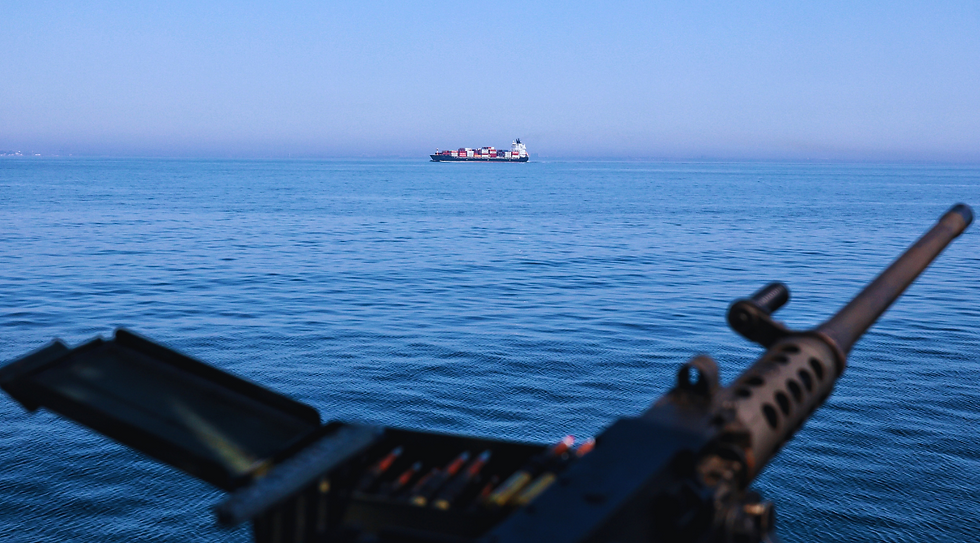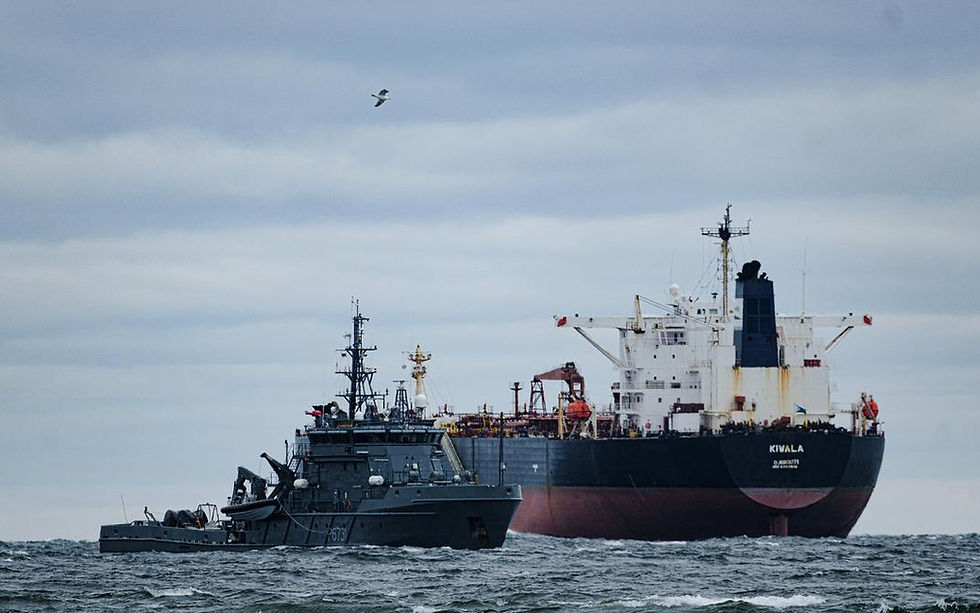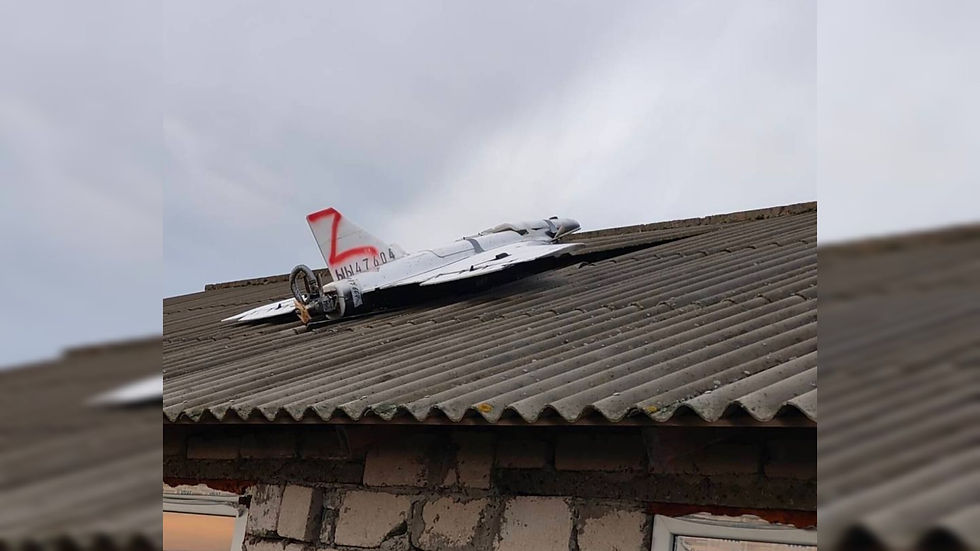A New Western Strategy for Russian Aggression
- Res Publica

- Aug 26, 2025
- 4 min read
After years of trying to force Russia to halt its aggression, the West may eventually have to reconsider its risk tolerance to achieve a ceasefire in Ukraine.

Photo courtesy Ursula von der Leyen/Twitter
Since 2022, the West has endeavored to help Ukraine and convince Russia to end its war of aggression. Despite Ukraine’s sustained defense, noble multinational efforts to assist, and Kyiv’s signing of multiple security agreements with Western states and the European Union (EU), such labors have not succeeded yet in forcing Russia to seriously engage with efforts to bring peace.
The stalemate has evolved into a war of attrition, characterized by drones, glide bombs, artillery strikes, and some Russian gains, but no significant breakthroughs. The toll of dead and wounded, and damage done, is simply breathtaking.
The core of the West’s strategy against Russia hinges on compellence, which differs from deterrence. The latter involves encouraging a state to refrain from certain actions by assuring punitive retaliation. Compellence entails insisting a state change its behavior by inflicting pain through a variety of measures. The West’s largely compellence-centric approach, which replaced its previous deterrence-based strategy, has hurt Russia, but not altered Putin’s defiant behavior.
While Russia has suffered heavy losses and its economy looks to be in trouble, Putin will likely only stop for good if he faces a credible deterrent. The West’s current strategy, including its military assistance to Ukraine, sanctions against Russia, and even America’s threat of tariffs on select buyers of Russian oil, lacks a credible deterrent. Putin also knows that imposing high tariffs on another country for trading with Russia, while excusing others for doing business with Moscow, amounts to a further, and unsustainable, stab at compellence.
Efforts to deter Putin have been limited, with the exceptions of his decision not to use tactical nuclear weapons to date, and his occasional — but not full — travel restrictions abroad due to an International Criminal Court (ICC) warrant. Europe’s plan to make Ukraine into a “steel porcupine” arguably embodies a deterrence by denial strategy, but it is far from complete.
The United States has worried about establishing a credible deterrent against Russia over Ukraine because it could ignite a conflict spiral, and repositioning resources may hinder its ability to deter China from invading Taiwan or undertaking other hostile acts. European states, meanwhile, face their own challenges in deterring Russia over Ukraine, for despite strong declarations by the UK and France to assist in protecting Ukraine following the war’s eventual end, any “coalition of the willing” will remain heavily dependent on capabilities only the US possesses.
This leaves the West with a strategy that assists Ukraine, while minimizing the chances of stumbling into a wider war. Yet this approach is based on an optimism that Russia’s continued casualties and economic struggles will eventually force Moscow to quit. There is little sign of that.
Indeed, talks following the Trump-Putin summit in Alaska on August 15 could yet strain US-European relations or pressure Kyiv into ceding territory. The chances of brokering a lasting armistice appear remote. Putin’s irredentist thinking means that a ceasefire would likely just pause his aggression. Ukraine, in turn, has no intention of ceding land. At this juncture, the Kremlin may simply be bluffing about being open to ending the war.
Despite talk of designing “security guarantees,” Western states seemingly prefer to coordinate theirs with Ukraine after hostilities with Russia cease. Yet the possibility exists that Russia may derail all attempts at resolving the conflict, to prevent security guarantees from materializing. Russia has restated that it would reject any post-war security guarantee for Ukraine that involves the deployment of forces from NATO members.
If the war endures, or if a pause proves unsustainable, then the West would have to re-evaluate the level of risk it is willing to incur to ensure Ukraine’s sovereignty. Western states may ultimately persist with compellence, but its limitations will have been laid bare.
To establish a credible deterrent under these circumstances, the West would need to risk war with Russia. This could involve Kyiv being officially invited to prepare to join a military alliance with one or more Western states.
Such an approach is fraught with daring assumptions regarding feasibility, as well as the West’s current security burden-sharing impasse — the US has made clear it will not offer formal defense guarantees to Ukraine, while European states are badly under-armed for conflict with Russia, even if they possessed the political will. These issues would have to be resolved prior to the alliance’s enactment to make any future Western deterrent credible.
Furthermore, a deterrence-based strategy, supplementing existing sanctions and military aid to Ukraine, would trigger an escalation, likely with Russia formally declaring war against Ukraine, mobilizing its hitherto shielded conscript army, and engaging in more nuclear saber-rattling against the West.
It’s unlikely Putin would launch a conventional attack against NATO or initiate a nuclear exchange. Instead, a sitzkrieg (or “sitting war”—where both sides would find themselves at war but not engaging in any conventional operations) or a type of “frozen conflict” could arise once this new Western alliance including Ukraine, is enacted.
This is far from ideal, but Moscow may appreciate the hazard of such a situation and agree to negotiate an armistice with the West and Ukraine along current lines or at least halt its advance. In other words, in spite of such brinksmanship, a Western shift to a deterrence-based strategy conceivably offers a way to halt a runaway Russian war machine against Ukraine before any fighting with the West starts.
Granted, this is risky. But by initiating and then phasing the recognition of Ukraine as a member of an alliance, Russia would be given time to consider its options, pursue diplomacy, and possibly halt its military advance. The Kremlin would face the pressures of both compellence and deterrence.
It is a time to ask the question: If not this, then what? More than three and a half years into Europe’s most destructive conflict since World War II, new thinking is needed.
By Charles Sullivan. Charles Sullivan specializes in Central Asia and is the author of Leaders of the Nation: Kazakhstan during the Twilight of the Nazarbayev Era and the Russo-Ukrainian War (Palgrave Macmillan, 2025). Article first time published on CEPA web page. Prepared for publication by volunteers from the Res Publica - The Center for Civil Resistance.





Comments